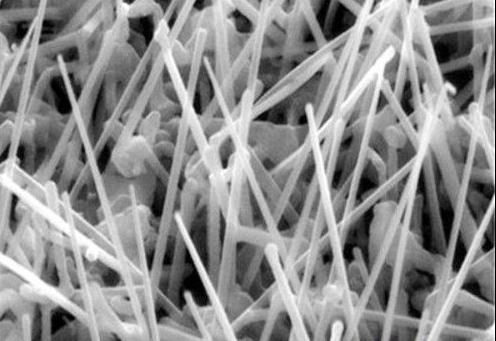Introduction To The Types Of Lithium-Ion Batteries
Jun 27, 2019 Pageview:1279
The emergence of lithium-ion batteries was brought about by the desire for a rechargeable cell that is lightweight. It was needed to power the fast-growing market for portable electronic equipment back in the 1990s.
It started with mobile phones and cameras, and in time, the technology became the source of power for almost everything. It ranges from tools with cordless power down to large scale energy storage as well as automotive applications.
However, the increased energy density and a large volume of discharge cycles offered by lithium cells are actually its most vital factors. This makes the cells indispensable in both electric vehicles and mobile phones.
Nonetheless, there are diverse ways available in which these cells are much more powerful to the regular battery chemistries.
How Many Types Of Lithium-Ion Batteries Are There?
There is no doubt that lithium-ion batteries can be found in diverse households today. Almost every one of us carries them with us on our mobile phones.
Due to their high energy density, they are portable, and they last longer because of their rechargeability. These batteries have made it possible to produce aircraft that make use of only electric propulsion like the Solar Impulse aircraft.
However, there is still a very long way to go before lithium batteries will replace low-cost acid batteries. However, researchers are being carried out all over the world.
Meanwhile, there are five types of lithium-ion batteries, which are:
· Lithium-cobalt oxide battery
This type of lithium battery is mainly used in electronics that are handhelds like laptops, cameras, and cell phones. While they are risky when they are damaged, cobalt is, however, expensive and extremely rare.
The battery has a low discharge rate, and as for its highest energy density, it is 110-190 Wh/kg.
· Lithium-titanate battery
This battery can be operated at very low temperatures. This temperature is -40°C. Its charge and discharge abilities are very rapid, and it is used in Mitsubishi i-MiEV.
It has a reduced inherent voltage of 2.4V when compared to that of 3.7V. Also, its energy density is low, and it is placed at 30-110 Wh/kg.
· Lithium-Iron phosphate battery
The Lithium-Iron phosphate battery is capable of dramatically reducing the risks of fire and of course, overheating. It provides a much lesser volumetric capacity. The Lithium-Iron phosphate is utilized in medical equipment as well as power tools.
It has a longer life span, and it is inherently safe. The battery makes use of an energy density that is low at 95-140 Wh/kg.
· Lithium-Nickel manganese cobalt oxide battery
The lithium-manganese cobalt has a longer life span and inherent safety. While cobalt is expensive and at the same time extremely rare, it is also less susceptible to heat.
This battery is utilized in e-bikes, electric power trains, and power tools. It has an energy density that is low at 95-130 Wh/kg
· Lithium-manganese oxide battery
With a reduced cost, the lithium-manganese is inherently safe and has a very long lifespan. It is mostly used in laptops, cell phones, and hybrid vehicles.
The battery has a discharging rate that is high and an energy density that is low at 110-120 Wh/kg
Differing from the popular belief that there are diverse types of lithium-ion batteries, the five of them that have been analyzed above are those that have been commercially established.
However, there are lots of lithium chemistries like Li-S that are still going through research. It has been noted that all the batteries have their very own energy density, reliability, power density, and safety.
The diverse battery chemistries enable scientists actually to build batteries according to the requirements of the user. Energy and power density are related inversely, and they come at the expense of one another.
This means that a rise in the power density will lead to a fall in energy density and vice versa.
Also, some lithium battery chemistries cannot be categorized as lithium-ion. They include:
· Lithium silicone
· Lithium-Air, and;
· Lithium Sulphur
Although they are still coming up, they still hold huge prospects.
Compare The Most Important lithium battery Ion Type
Some of the things to note about these lithium battery types includes the fact that lithium cobalt oxide has increased specific energy when compared to the other batteries.
This makes it the preferred choice for both mobile phones and laptops. But, compared to other lithium-ion types, its specific power is low, and it has a low lifespan.
For the Lithium manganese oxide, its specific power is simply moderate, and it has a safety level that is moderate as well. While it is not expensive, it has a low performance and a lifespan that is low as well.
As for lithium iron phosphate, it has just one huge con when it is compared to the other battery types. This con is the fact that it has low specific energy. Asides from this, all of its other characteristics are between moderate to high.
Next is the lithium nickel that has just one strong pro, and it centers around its high specific energy. It does not have much to offer when compared to all others. For the remaining characteristics, they are all moderate.
Lastly, the lithium titanite provides high safety, long lifespan, and high performance. These are all vital features that each and very battery should have. However, its specific energy is quite low when it is compared with other lithium-ion batteries.
How To Choose lithium ion battery Type for Your Device
In choosing the lithium battery type for your device, you will need to follow these tips, which include:
· Knowing the size of batteries you need
It is quite simple. All you need to do or know here is that if your phone runs on AAA batteries, then what you need is a triple-A group. Also, you can check the device for any indication of what battery size the device will accept.
· Choose between rechargeable batteries or single use
The single-use batteries are way cheaper than upfront and entail a shell life that is ideal, but for rechargeable batteries, they can be used and re-used again. This makes them much more cost effective.
· Purchase the ideal type of battery
Having the knowledge of how batteries work and knowing how the alkaline differs from lithium batteries and NiMH from lithium, you will be able to pick the most ideal battery of your choice.
To Sum It Up
Based on the high energy density of the cells, they are capable of been discharged at very high power and can be recharged quickly as well.
Thus, when it comes to situations, where the charging power or maybe the time may likely be limited like stop-start cars or solar PV systems, it is not dangerous to operate the lithium cells continually at a partial state of charge. This will give them greater operating flexibility than lead-acid batteries can offer.
- Prev Article: Cheap 18650 Batteries
- Next Article: Search On 18650 Battery Tester
Leave Message
Hottest Categories
-
Hottest Industry News
-
Latest Industry News











